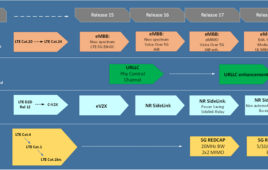You’re waiting at the bus stop, and you’ve got a few minutes to kill. So you key in a speed dial on your mobile phone. Within seconds, you’re watching a trailer for a movie you might want to see, or viewing a 3-minute YouTube video clip that a friend told you about.
|
|
|
By Brough Turner |
This is the future that many mobile operators see: Mobile video services driving revenues. Mobile TV is a still-nascent technology that promises huge benefits to early adopters with the creativity, infrastructure and resources to take it from infancy to widespread use. But mobile TV has become an omnibus term that either means broadcasting TV content to handsets, or providing video on demand to mobile subscribers. The difference is important, as costs and potential returns are very different.
Operators have a choice. Do they launch mobile broadcast TV, mobile video on demand, or both? Video on demand is the only choice that makes sense. It’s flexible, gives subscribers control over what they see and when, and has the potential to spark social media-sharing that can grow revenues. Finally it’s forward-looking, unlike broadcast TV.
BROADCASTING BECOMING OBSOLETE
Two or three channels of broadcast TV was amazing in 1950, but our relationship with television has evolved, first with cable (as Bruce Springsteen said, “57 Channels (And Nothing On)”), then with TIVO (allowing us to set our own schedules), and now with the Internet and its ability to deliver any video on demand. In the future, the only content that might justify scheduling your time around a broadcaster’s schedule will be live sports coverage and exceptional news events. Broadcasting to live audiences was a 20th century phenomenon that will become a niche in the 21st century.
Nonetheless, some operators are investing in mobile broadcast services. Typically this means buying new spectrum, building new wireless infrastructure and promoting new handsets that can receive the broadcast channels. These operators are running into a slew of problems, most notably:
- Cost – Buying new spectrum isn’t cheap; nor is the cost of building out the radio infrastructure to ensure widespread coverage. New broadcast standards such as Digital Video Broadcasting – Handheld (DVB-H) in Europe, multiple standards in Asia and elsewhere, and Qualcomm’s MediaFLO in the United States drive the need for new handsets, which further delays adoption and increases costs.
- User Attitudes – People tune into mobile video at odd times: waiting for a train, riding in a cab, etc. And they may not have a lot of time. So subscribers are less likely to spend time and money “channel surfing” on their phones or staying with a program they don’t really want to watch. Traditional 30-minute programs are ill-suited for mobile TV viewing.
GIVE PEOPLE WHAT THEY WANT
Video-on-demand (VoD) solves many of these problems as is apparent from watching early adapters. Although Asia and Europe lead the way for adoption of new technologies such as mobile TV, the United States has shown some small progress.
More than a quarter of the handsets owned by the 250 million U.S. mobile subscribers are video-capable, according to Nielsen and M:Metric estimates from mid-2007. Only a small percentage of those with video-enabled handsets subscribe to data services and use their phones’ video capability. But what they do is telling.
The most popular content on those phones? Music videos, movie trailers, weather, sports action clips, comedy videos, cartoons and amateur video shorts – typically a few minutes long at most. Further analysis shows that 85% of mobile video viewers watched viral videos (content sent or pointed out by others) rather than content they found themselves.
This suggests short format, on-demand videos, like the increasingly popular 2- to 3-minute mobisodes some operators are offering, is what subscribers want. They want to be able to choose which brief clip – a sports highlight, TV show snippet, movie trailer, etc. – to watch and when to watch it.
Operators may generate added revenue with unique content, such as mobisodes that are exclusive to the operator’s network and entice repeat subscribers to dial in to see what happens next. However, a key subscriber requirement is easy access to any content their friends may come across. This means access to video content on other operators’ networks or on the Internet, for example on YouTube. “Walled gardens” impede adoption.
Video will be a critical differentiator as operators look for new ways to increase margins. But as they’re strategizing next steps, they need to carefully consider the long-term implications. Investing in mobile TV broadcast services is expensive with little chance of near-term or long-term profit.
Mobile video on demand is the way to go. It takes advantage of the freedom and social networking benefits of models like YouTube, where user control and flexibility drive adoption.
Turner is co-founder, senior vice president and CTO of NMS Communications.





